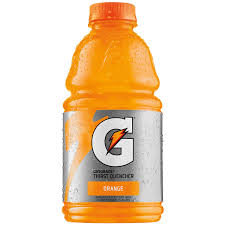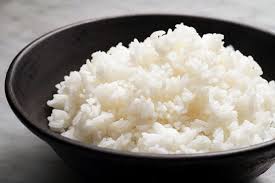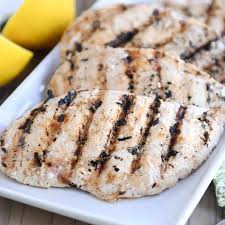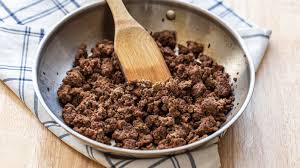Macronutrient Setup For Certain Lifestyles (Part 3)
- Elliot Wilson

- Oct 4, 2020
- 4 min read
When people first start in the gym, they can only do one exercise per muscle group. This results in a full-body workout, and since the volume (numbers of sets) for each muscle group is so low, they do this every other day since that's easier to recover from. And since they're new, they can really only do this 3 times per week with a 2-day rest period, typically the weekend. But as you progress, you should be adding more volume to each muscle group, which gives your muscles a new stimulus that forces them to grow. This is the basic buildup you should do as you progress in your training, but we'll get more into the workouts in a later series.
Long story short, once you get to the point where you're doing intense work, and are doing high-volume training on the muscles, your macros will need to be cranked up! This can also include High-Intensity Interval Training (HIIT) or training as an athlete. Your glycogen levels are constantly being depleted as your muscles are facing higher amounts of time under tension. Also, your body is forced to find a quick and easy energy source to use when you're doing explosive, intense training, and what better than glycogen? I know some of you are thinking stored bodyfat could be an answer as well, but we'll get into why your body doesn't break down fat while doing this style of exercise in a later series.
So first up, carb intake.
You'll want to start with 1g per pound of bodyweight with this style of training, and then adjust from there. More than likely you'll need to go above that if you're a true athlete, but add the carbs in small increments so you can track them more easily and can so you can figure out the exact number you need. If your workouts are starting to suffer, add 10g to your diet and go from there. This way you also don't add too much and risk fat gain. Remember, these carbs need to be taken in AFTER the workouts as this is when your body is most depleted, whether that'd be from high-volume weight training or athletic training. Now, that doesn't mean you need to take in all of your carbs right when the workout is done, but you can still take in 0.5g carb per pound of bodyweight right when the workout is done. After that, take in some carbs every few hours, but it shouldn't take you 8 hours or more to get all of your carbs in. Stretching that carb feeding window too much will cause the carbs that you ingest at the end of that window to get stored as fat since your body won't sense an urgent need to store those carbs in the muscles or liver anymore.
Next up is protein.
With high-volume weight training, you should be aiming for right around 1g of protein per pound of bodyweight. Unlike the carbs, protein can be taken in leading up to the workout and obviously post-workout too. However, as said in previous articles, do not eat anything within 5 hours of working out as you want to leave your stomach and digestive tract empty to allow for those post-workout nutrients to do their magic. Now, similar to carbs, you can take in around 0.5g of protein per lb of bodyweight postworkout in the form of whey protein, as whey digests quickly and as your muscles just received a beating, which means they'll be able to absorb more protein than usual.
With your other meals, whether it'd be in the hours before your training session or afterwards, make sure you're getting around 30g of protein. The reason for this amount is because most high-quality protein sources give you at least 3g of leucine within that 30g of protein. Leucine is the king amino acid when it comes to protein synthesis, and research has shown you need at least 3g of it to initiate protein synthesis (muscle-building). You can also look up online how much leucine is in each serving of a given food in order to help you figure out how much of that food you need to get protein synthesis going. But for starters, the foods with the highest amount of leucine are chicken, beef, turkey, eggs. Believe it or not, peanut butter actually has 0.5g of leucine per serving, and even I will have peanut butter as a snack to keep protein synthesis going. Not to mention it has healthy fat with it, so it's a good snack if you're doing low-carb or if you want to add it to your breakfast.

Speaking of fat, you want to make sure that you take in your fats at breakfast and in the early portion of the day. Having fats with your protein at breakfast, while keeping carbs close to zero of course, will keep your insulin levels low and allow your body to burn more fat as you go throughout the day. Spiking insulin when you first wake up puts your body into storage mode, and will derail any fat-burning potential for the day. Yes, you can program your metabolism, but we'll get into that later on. As far as how much fat, have 2g of fat for every 1g of protein for the beginning of the day. This ensures that your insulin levels will be kept at bay when getting your protein in. Yes, protein alone can spike insulin, mainly because of leucine, but getting in the right amount of fat will prevent that insulin spike. However, once your workout is done you should be trying to lower your fat intake as much as you can for the rest of the day. The reason is that you want your nutrients to digest quickly after a workout, and fight slows digestion.
So there you have, now you know how to set up your Macros for any given scenario, whether it'd be living a sedentary lifestyle or training like an athlete. This just goes to show how big of a role nutrition plays in your life. No matter what you're doing, NUTRITION comes first. But of course, if you want to get your dream physique, which I imagine for most of you will include a muscular and lean build, you'll HAVE to incorporate weight training in order to sculpt the muscle just the way you want it. This'll be the next series in my Blog, Cracking The Muscle-Building Code.













Comments